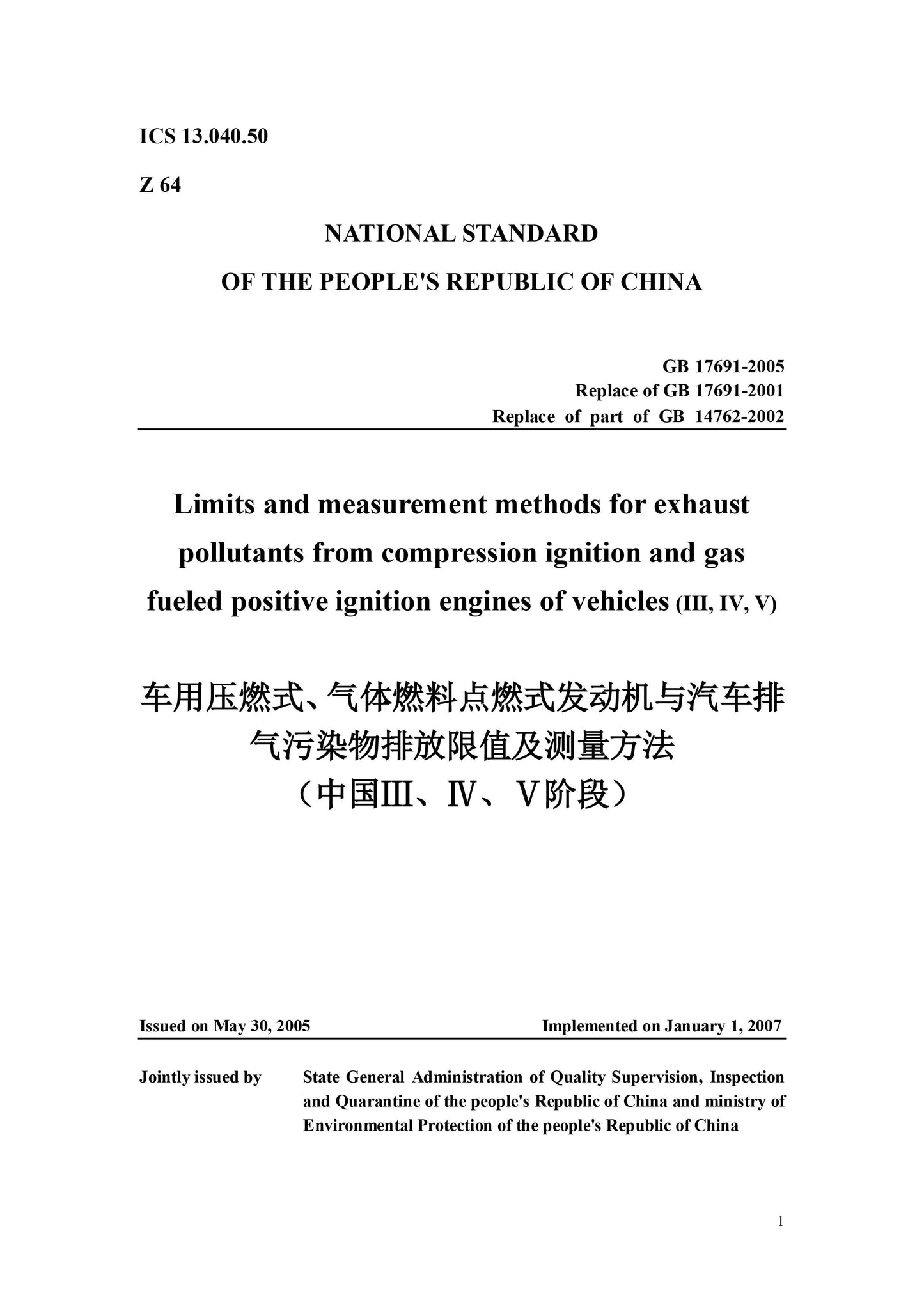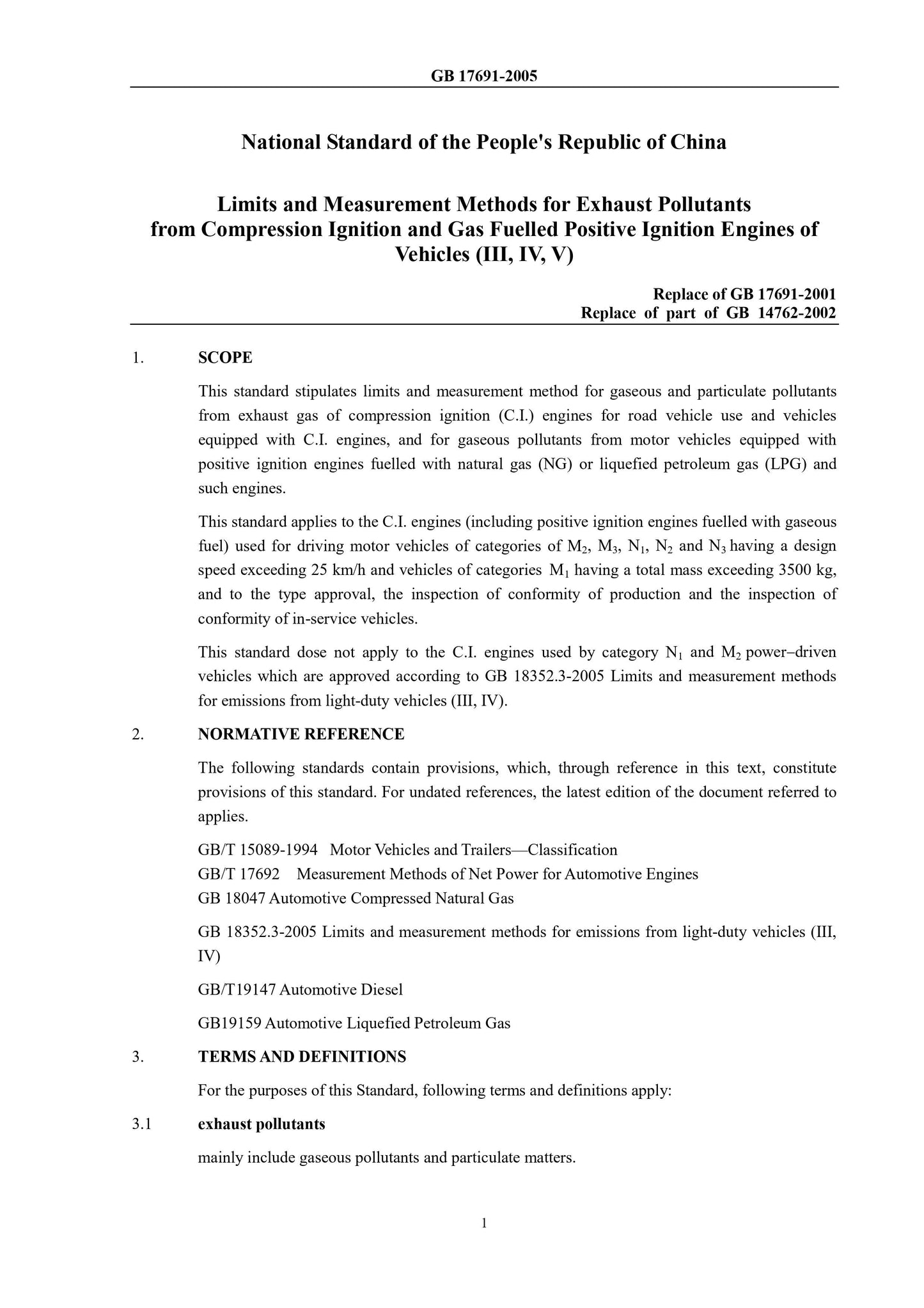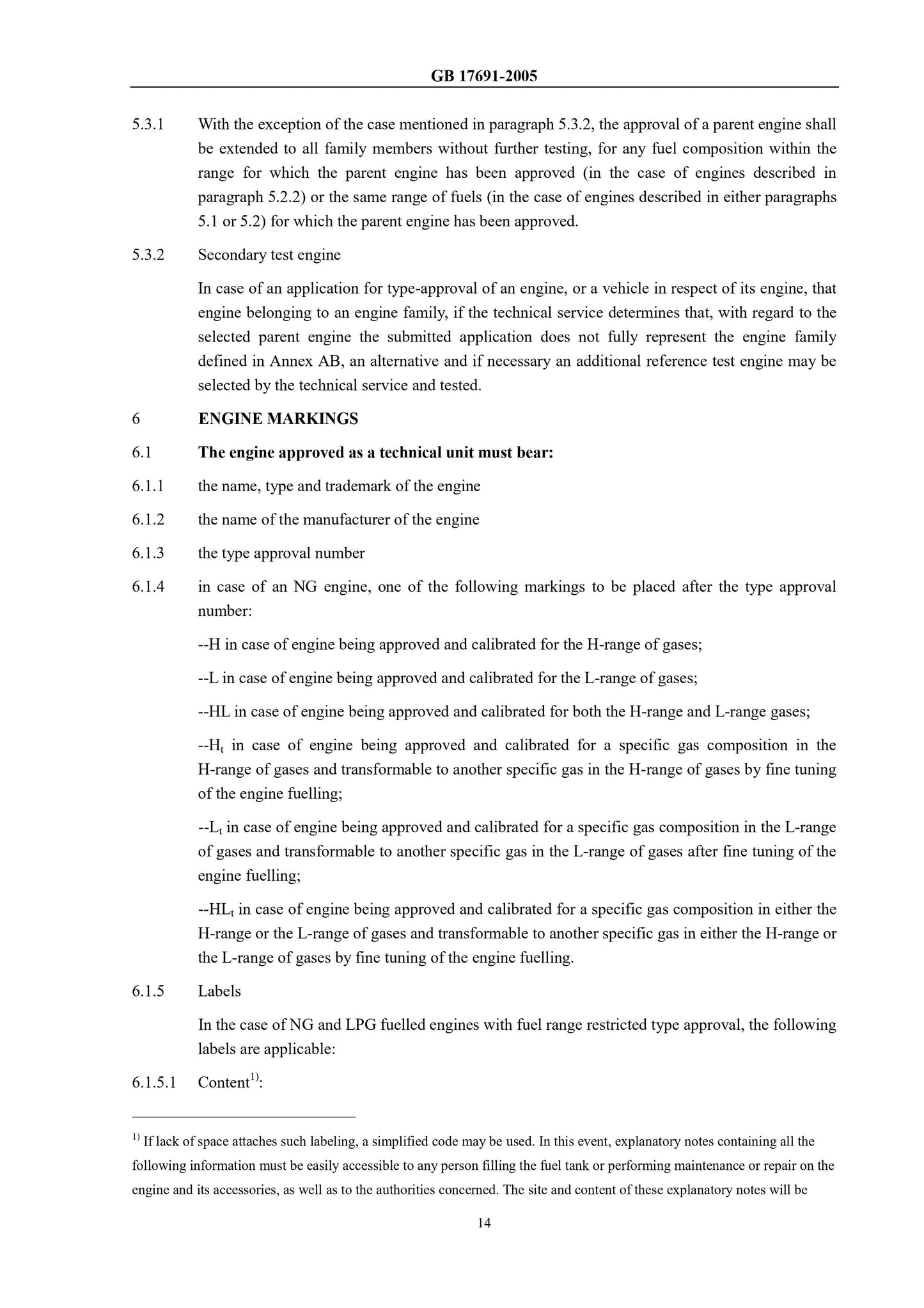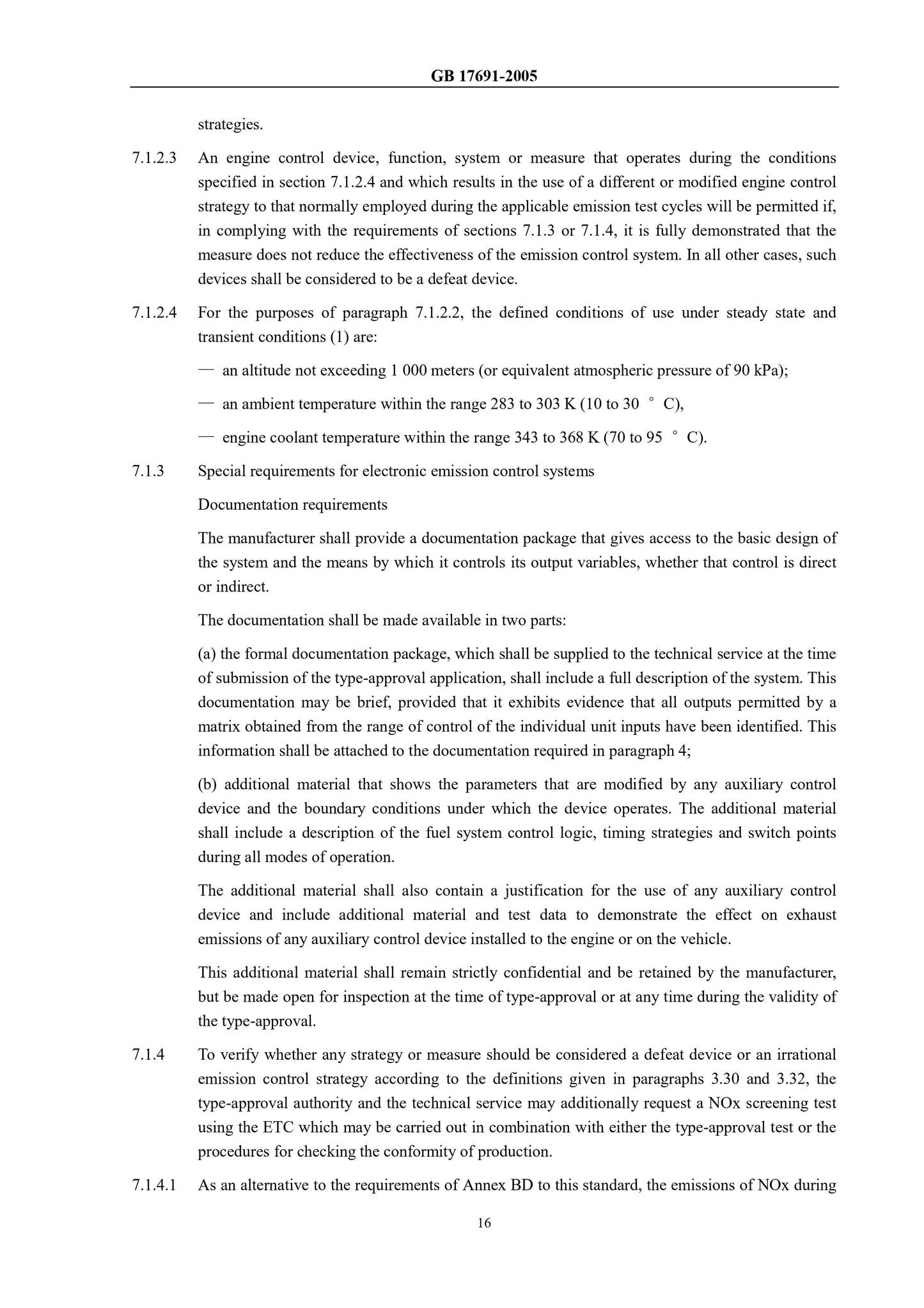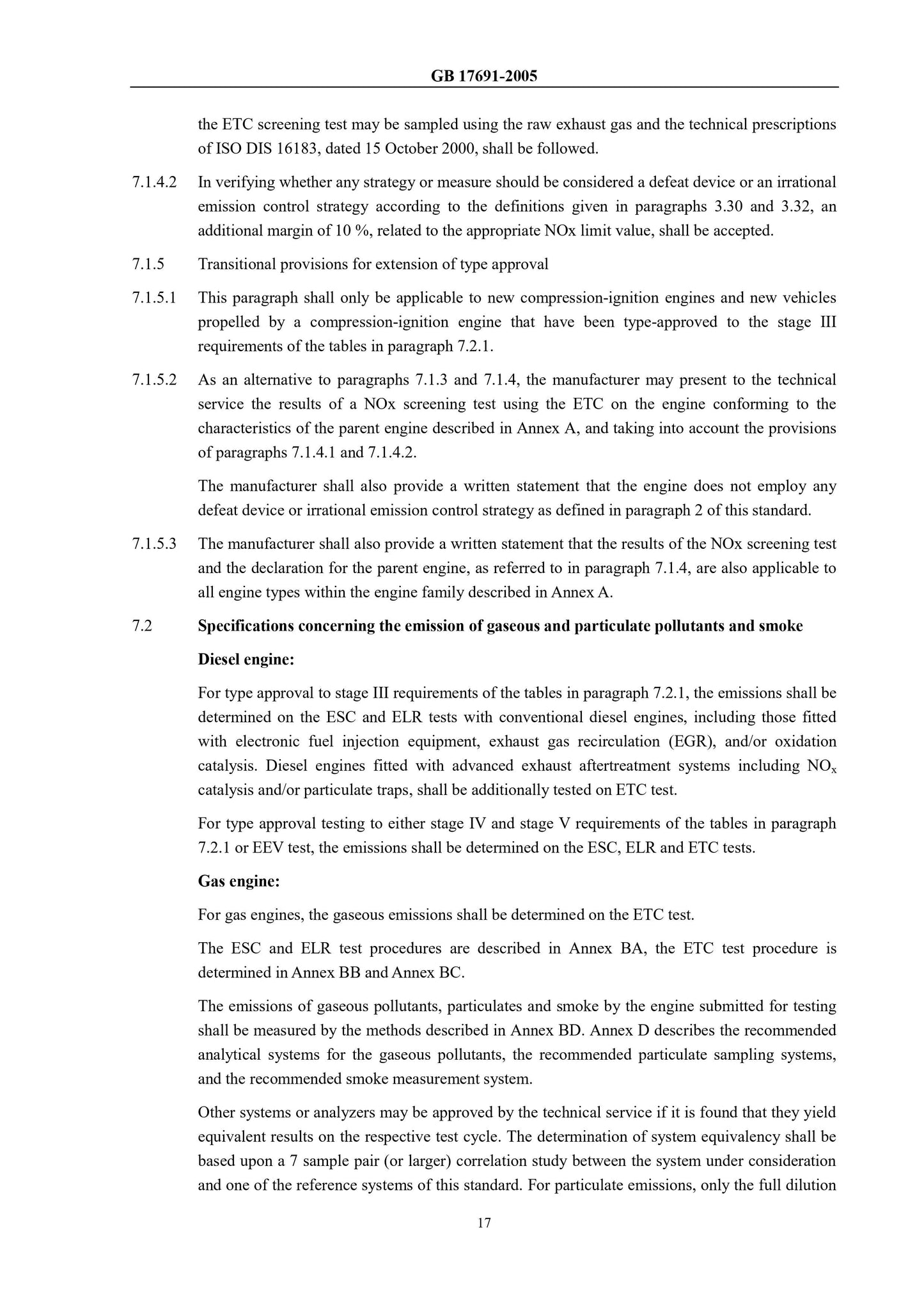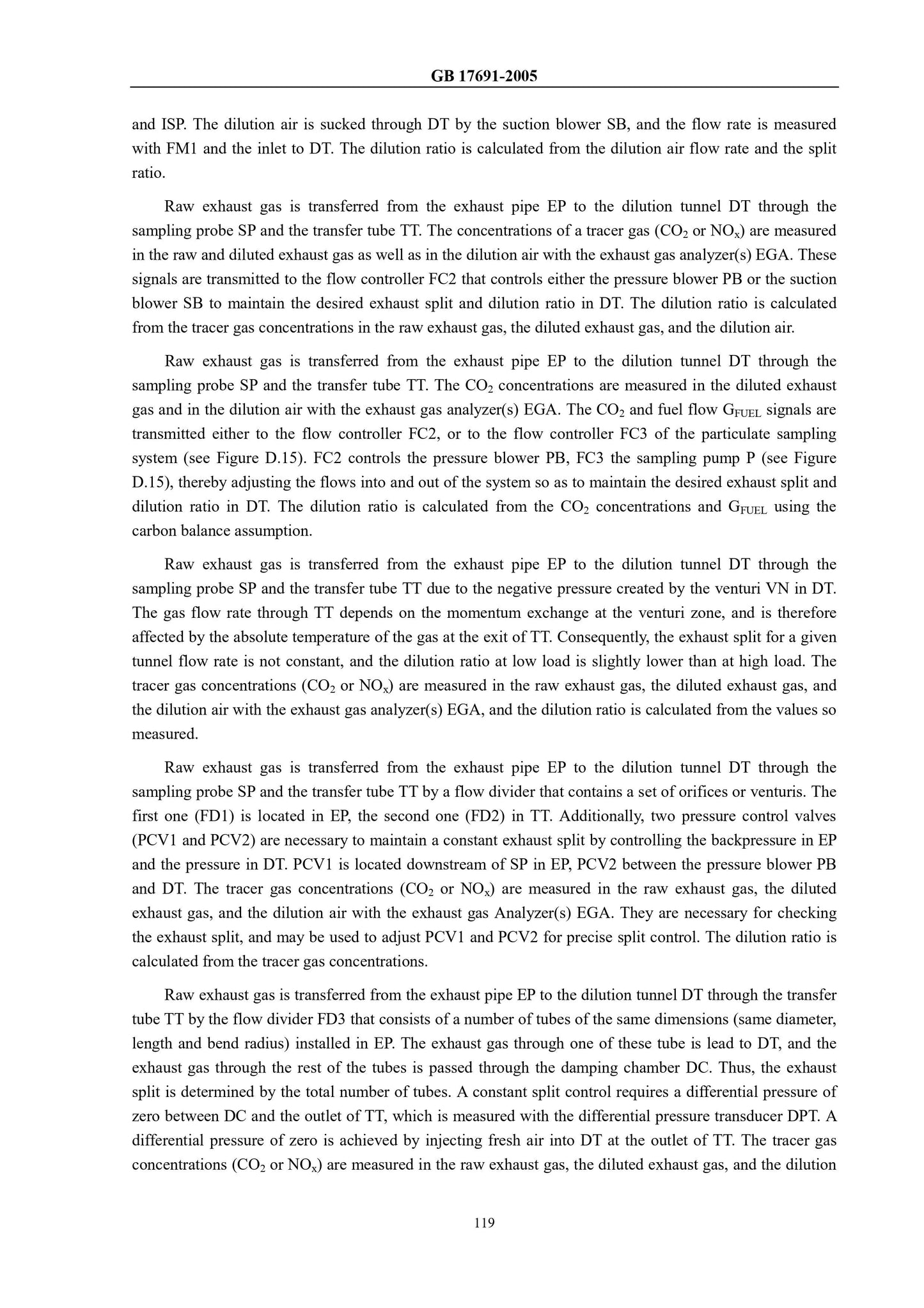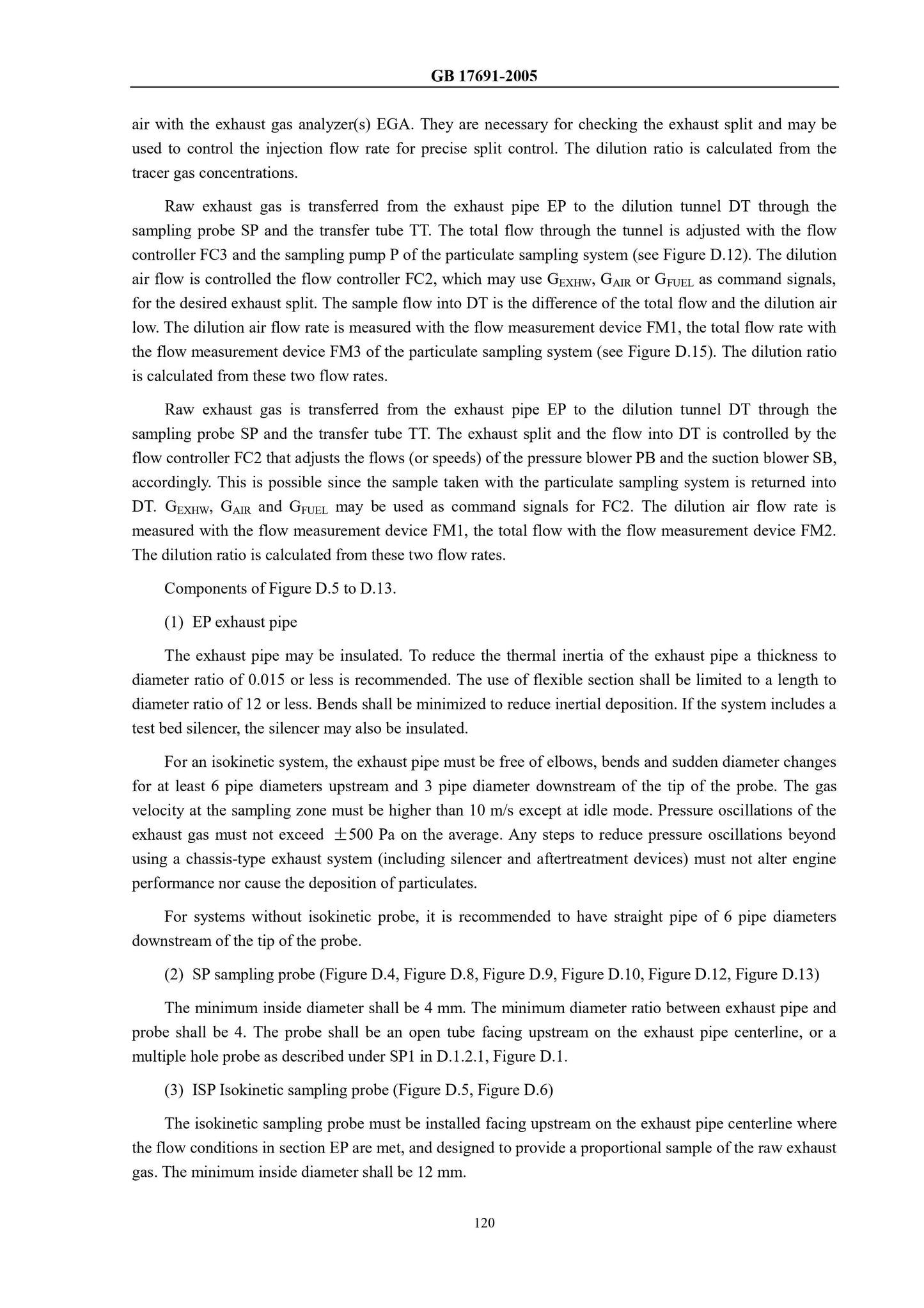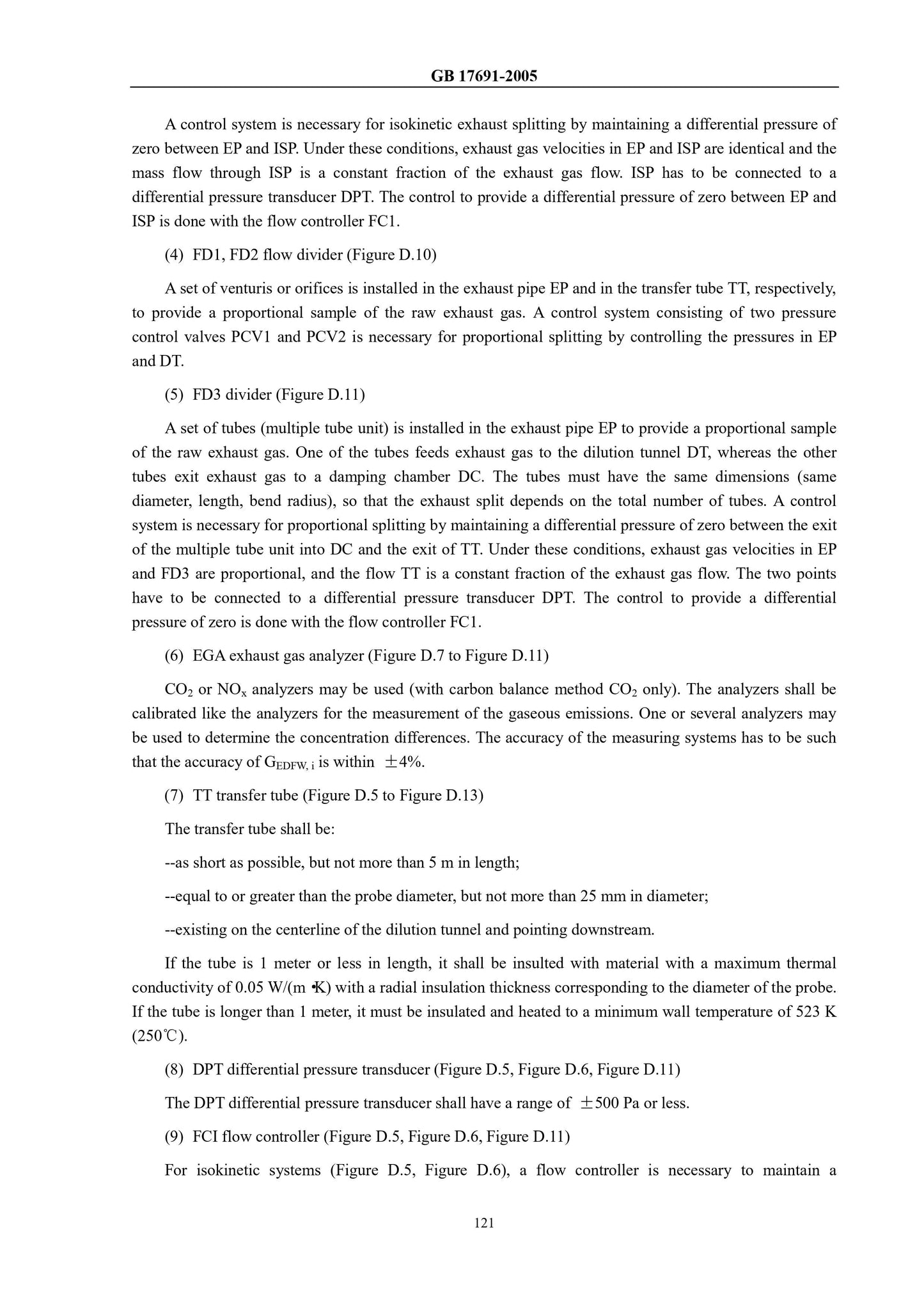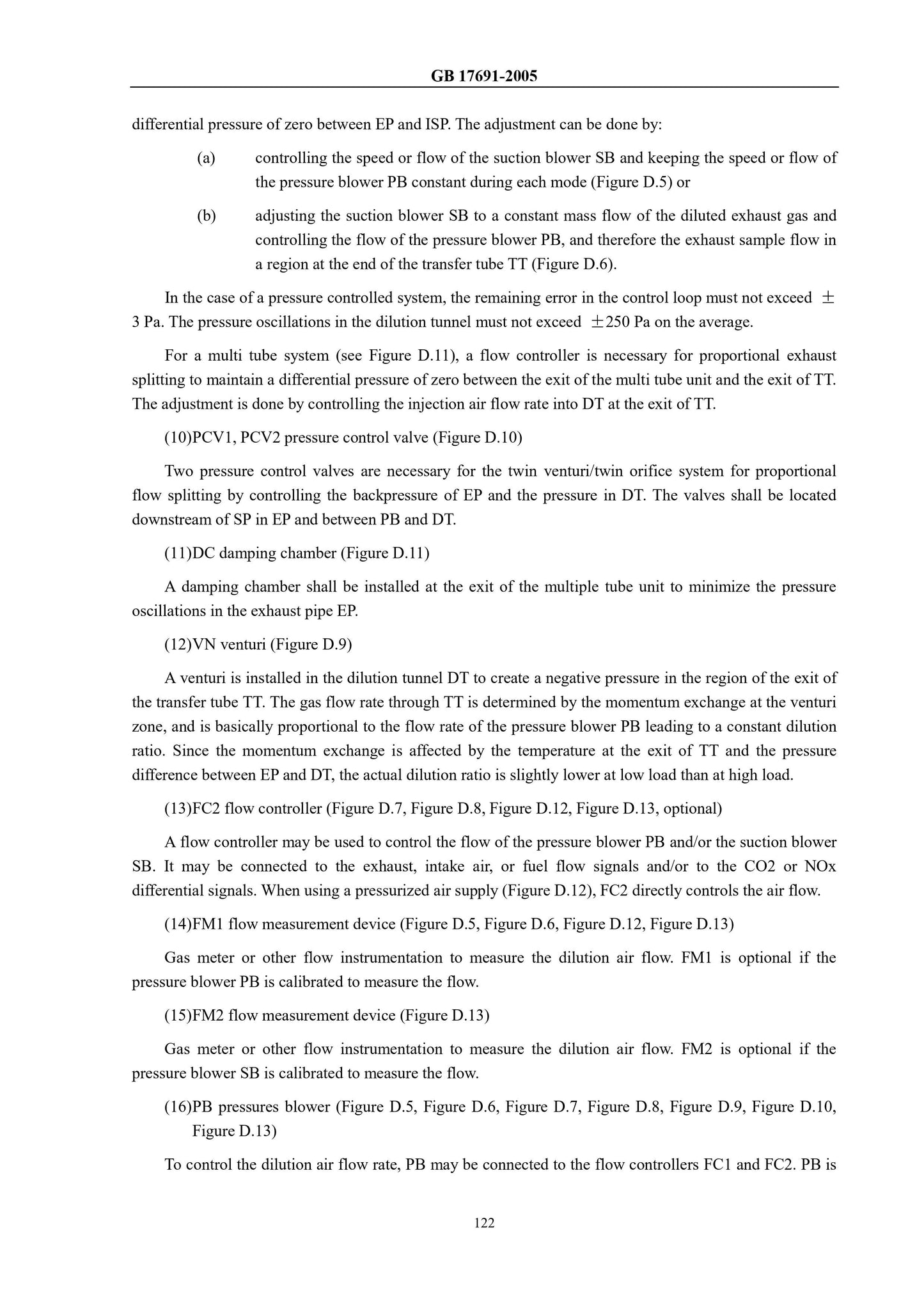1
/
of
11
www.ChineseStandard.us
GB 17691-2005 English PDF
GB 17691-2005 English PDF
Regular price
$140.00
Regular price
Sale price
$140.00
Unit price
/
per
Shipping calculated at checkout.
Couldn't load pickup availability
GB 17691-2005: Limits and measurement methods for exhaust pollutants from compression ignition and gas fuelled positive ignition engines of vehicles (III, IV, V)
Delivery: 9 seconds. Download (and Email) true-PDF + Invoice.Get Quotation: Click GB 17691-2005 (Self-service in 1-minute)
Newer / historical versions: GB 17691-2005
Preview True-PDF
Basic Data
| Standard ID | GB 17691-2005 (GB17691-2005) |
| Description (Translated English) | Limits and measurement methods for exhaust pollutants from compression ignition and gas fuelled positive ignition engines of vehicles (III, IV, V) |
| Sector / Industry | National Standard |
| Classification of Chinese Standard | Z64 |
| Classification of International Standard | 13.040.50 |
| Word Count Estimation | 146,117 |
| Date of Issue | 2005-05-30 |
| Date of Implementation | 2007-01-01 |
| Older Standard (superseded by this standard) | GB 14762-2002 ial; GB 17691-2001 |
| Quoted Standard | GB/T 15089-2001; GB/T 17692; GB 18047; GB 18352.3-2005; GB/T 19147; GB 19159 |
| Adopted Standard | 1999/96/EC, MOD; 2001/27/EC, MOD |
| Regulation (derived from) | Announcement of Newly Approved National Standards No. 7 of 2005 (No. 81 overall)SEPA Notice 2005 No. 21 SEPA Notice 2005 No. 21 SEPA Notice No. 24 of 2008 |
| Summary | This Chinese standard specifies equipped with compression-ignition engines and compression ignition engine automobile emissions of gaseous and particulate pollutants emission limits and test methods, well equipped for natural gas (NG) or liquefied petroleum gas (LPG) as a fuel ignited engine ignition engine vehicles and their emissions of gaseous pollutants emission limits and measurement methods. This standard applies to the design speed greater than 25km/h for M2, M3, N1, N2 and N3 categories and the total mass greater than 3500kg category M1 vehicles equipped with compression ignition (including gaseous fuel ignition) engine and vehicle type approval production consistency checks and compliance checking vehicles. If equipped with compression-ignition (including gaseous fuel ignition) engine N1 and M2 class vehicle has been in accordance with GB 18352. 3-2005"light vehicle emission limits and measurement methods (China ��, �� stage)"provisions were approved in the form, then the engine may be type approved according to this standard. |
Share
